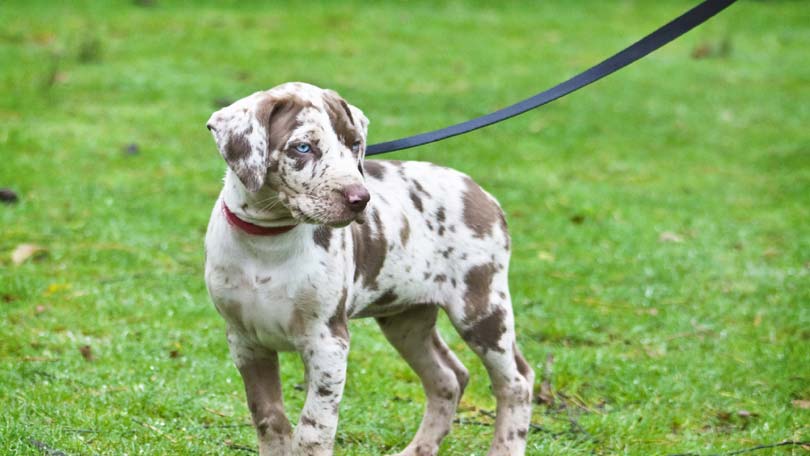
We have all seem them – the dogs that pull their owners around, jump on strangers walking by minding their own business, or cutting across in front of joggers, tripping the up and sending them flying. Walking a dog can be a headache, a hazard, and just generally a horrible experience but it doesn’t have to be. Start early and training a puppy to walk on a leash in a calm, well-behaved manner is easy as long as you follow a few easy steps.
The First Easy Steps to Help Train a Puppy to Walk on a Leash
- Like most times when working with the new addition to the family, training a puppy to walk on a leash starts with consistency – everyone in your family must follow the same rules and work to train the pup in the same manner. With any training, consistency amongst the family must be a priority and anyone who works the pup must understand how vital this is for the baby to grow into a well-rounded adult.
- A puppy is never too young to wear a collar! Most good breeders will put colored cord or collar on a litter of pups to help identify the individuals but this helps in getting the pups used to wearing ‘clothes’. The bonus? By the time they are old enough to go to their new home, they have been tugged, dragged, nipped, and bullied around the whelping bed by those collars and a leash is not going to be any type of a surprise!
- As soon as you have your pup home from the breeder, attach a six to twelve inch length of cord to the collar (length dependent on age and height of the pup). Training a puppy to walk on a leash is somewhat dependent on them not having an emotional breakdown the first time you attach one to their collar. By getting used to the weight and pull of the leash on the collar, the puppy is half way to understand how to correct their natural movements when wearing a leash, nor will it be a shock the first time you give a slight correction.
- Once the pup is used to having six to twelve inches of leash attached to their collar, move them up to a several feet. Much like the shorter ‘stub’ of leash, a few feet of leash will allow the pup to learn how to naturally correct their movement when attached to a leash. In this case, part of the correction is that either step on the leash from time to time or it becomes snagged on an obstacle and they must correct around it to continue doing what they wanted.
- Use the leash as a fun means of behavior training! The leash should never be associated with going someplace ‘bad or scary’ – ever. A bad ‘leashed’ session at the vet will only be exacerbated by attaching a leash and letting the pup misbehave or ‘freak out’ at the end of the leash.
- Do not drag the pup by the leash ever. Instead, use the leash as a way of controlling the pup while encouraging it to come towards or follow you for the sake of being with you.
From Beginner to Walker: Training your Puppy to Walk on a Leash
When your pup can actually have a leash attached to their collar without losing their marbles, begin to actually take him for a walk. Always, always make it fun and never correct bad behavior. Instead, praise good behavior.
- He walks without pulling? Good puppy!
- He walks beside you without pulling? Great puppy!
- He walks beside you without pulling and keeping the leash out of his mouth? Bestest puppy!
- He walks beside you while ordering your Starbucks latte – skinny vanilla, low foam, and 120 degrees? Fabulous puppy!
The point is, when he does something right, let him know. How would you like to be corrected for what you do wrong but never be told what is the right behavior to do? We too would get resentful.
No puppy is beyond bribery. Food is that of the gods and squeaky toys and tennis balls all help to convince a distracted pup to misbehave. Line your baby up for success from the beginning and make sure you have some way to keep his attention!
Watch a dog show or obedience trial and what do you quickly notice? The dogs have all their attention focused on their handler. How? A simple trick of holding food or a toy close to their chin. As they walk, the pup looks up, makes eye contact, and focused all their less distracted attention you, making the walk enjoyable.
Can you do this in the street? You bet! Bribe and cajole that pup into doing your bidding and you will soon have a great puppy to walk on a leash.
Start early, using positive affirmation and bribery, consistency, and no scary destinations and your pup will quickly learn to love leash training!
